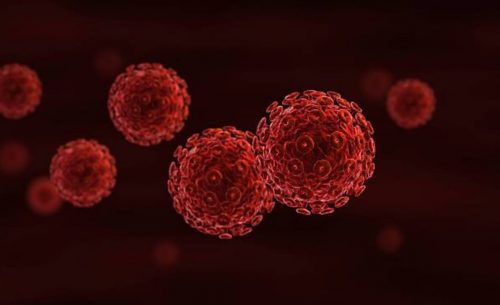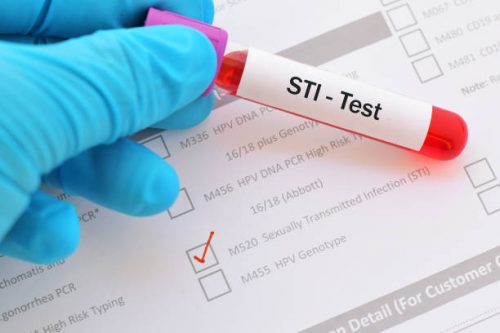with Dr Kaarthig Ganesamoorthy, DTAP Clinic
In light of Sexually Transmitted Infections (STI) emerging outbreaks, the WHO calls on countries to increase funding for STI services and focused efforts to scale up STI prevention, testing and treatment services, and urges against stigmatization, blaming, or shaming. Stigma makes it harder to end outbreaks and can stop people from accessing services. WHO calls for flexible approaches to addressing changing epidemics, with reinvigorated primary prevention efforts, identified and optimized opportunities to use differentiated service delivery models to meet the diverse needs of specific populations (https://www.who.int/news/item/02-09-2022-stis-in-2022-emerging-and-re-emerging-outbreaks)
What are Sexually Transmitted Infections (STIs)?
Sexually transmitted diseases (STDs) — or sexually transmitted infections (STIs) — are generally acquired by sexual contact. The bacteria, viruses or parasites that cause sexually transmitted infections may pass from person to person in blood, semen, or vaginal and other bodily fluids( https://www.mayoclinic.org/diseases-conditions/sexually-transmitted-diseases-stds/symptoms-causes/syc-20351240)
Sometimes these infections can be transmitted non-sexually, such as from mothers to their infants during pregnancy or childbirth, or through blood transfusions or shared needles.
What is the prevalence of Sexually Transmitted Infections (STIs) in Malaysia?
In 2021, reported data in Malaysia showed 2760 cases of HIV, 3461 cases of syphilis, 878 cases of AIDS, 1461 cases of gonorrhoea and, 2804 cases of hepatitis C. (https://www.statista.com/statistics/999241/sexually-transmitted-disease-cases-malaysia/#statisticContainer)
What are the symptoms of STI?
The more common types of STIs seen in practice include chlamydia, gonorrhoea, syphilis, HIV, and herpes. Other types of STIs include hepatitis infections and urethritis (trichomonas, ureaplasmas, mycoplasmas) and HPV infection.

In 2021, reported data in Malaysia showed 2760 cases of HIV, 3461 cases of syphilis, 878 cases of AIDS, 1461 cases of gonorrhoea and, 2804 cases of hepatitis C.
A lot of times, identifying the incubation period of an infection along with the presenting symptoms is good enough to give us an idea of the type of infection we’re dealing with.
For example, urinary symptoms like increased frequency, burning sensations when peeing, or abnormal discharge from the urethra can indicate infections like chlamydia, or gonorrhoea. This is sometimes also accompanied by a rash or a foul smell.
The incubation period, basically the time from when you have likely picked up the infection which is the last point of intercourse, till you start showing symptoms for chlamydia and gonorrhoeal type infections are between one and three weeks.
We can test for chlamydial or gonorrhoeal infections via both blood tests for antibodies, however, this is not usually practised, because these are only accurate after three months of picking up the infection.
A more precise way of picking this up is via a swab analysis via PCR (Polymerase Chain Reaction) testing. This is a more accurate testing protocol and will be able to pick up the infection within the first month of contact.
Primary syphilis on the other hand typically presents a single painless ulcer on the genitalia (but this is not limited to the genitalia). Syphilis is also capable of presenting in different ways depending on which state the infection is in.
The secondary form of syphilis will usually have a widespread blanching rash all over the body in what we nonchalantly call a ‘spider-web’ design.
There is also a tertiary form of syphilis, but this is a much more complex infection typically affecting the brain and normal body function, so we don’t have to get into that too much.
The incubation period of a syphilitic infection is about three weeks as well.
We usually test for syphilis via a blood test for TPHA (antibodies) and VDRL (titre) tests. If you have already been diagnosed or have had a syphilis infection previously, the TPHA test will always be positive. A positive VDRL test indicates an active infection and will require treatment.
HIV infections are well talked about, but what we fail to understand is that HIV infections are preventable and should not be a burden to oneself or society at large.
HIV can be asymptomatic in a majority of cases but if it does show, we can expect varied symptoms because HIV affects the body as a whole (it is a generalised infection rather than a localised one). Therefore, we can expect fever, muscle aches, swollen glands, lethargy, weight loss, inability to eat, rashes and so forth. The key here is to identify an infection early and to categorize it into its different infective stages.
This can be done via blood tests including a PCR test, antigen/antibody testing, and rapid test kits. Each of these tests will have different accuracies, sensitivities and specificities. It’s important to know which test is suitable for a situation.
Generally, HIV has an incubation period of 28 days.
Herpes is also another common infection. Its popularity is directly linked to its notoriety though. The reason for this is that herpes is an infection that is not treatable or reversible. It can be managed with medications though. So, if you’ve picked up herpes, you have a ‘friend’ for life.
Typically, herpes will present with a rash that can occur as soon as 48 hours after contact. The rash will start out as a red patch that will then have blisters or multiple whitehead-looking bumps which may pop and emit a clear discharge. The rash will typically settle within one week of occurrence.
It may, however, recur at seemingly random intervals but will typically be in the same region. More aggressive cases of herpes have been reported, as well. It can be tested via blood tests or swabs taken from the ulcer or blister and is usually detectable after three weeks.
Are all STIs curable?
Most are curable. In all of my consultations, we try to bring light to non-curable infections including HPV, HIV, and HSV (see the similarities). These are viral infections and can be somewhat prevented, but once contracted, they cannot be reversed or undone.
Hence, the importance of knowledge is crucial.
STIs like syphilis, chlamydia, gonorrhoea, urethritis and even to some extent, hepatitis can be treated with modern medicine these days. Please bear in mind that this is not a sweeping statement and may not apply in some cases. Most uncomplicated cases can be resolved though.
How can I protect myself from STIs?
Now that we know the various types of infections, it is essential to protect ourselves better.
Most importantly, we should know the status of a sexual partner. Sometimes this can be tricky considering some lifestyle choices but as best as we can, all partners must be tested for STIs in recent times and be clear of any infection. If any party has an active or undertreated infection, the possibility of transmitting it to another person is always a threat. Transmission rates vary between individuals, and infections but should never be taken lightly.
All sexual experiences should be protected by some form of barrier contraception. Condoms work best for this (both male and female condoms apply). The rate of protection by just wearing a condom can go from about 40% (for something like herpes infections) to over 90% (for HIV infections).
In addition, planning sexual activities and keeping up with your general health are crucial. There are medications like PEP and PrEP to prevent HIV. You can take these and be rest assured that you are protected against HIV infections.
Of course, for infections like hepatitis and HPV, there are vaccinations available. Maintaining your vaccination regime is always advised.
When do I see a doctor?
At any point in life when you are sexually active, it is good to get a screening done. How often do you need to do this? Well, this depends on your lifestyle really. If you have multiple partners or frequent casual sexual relations, then try and get the tests done at least three times monthly.
If you are in a monogamous relationship, tests should be done for both parties before the relationship is physically intimate, and following the end of the said relationship (if it occurs). There is no need to test for STIs in this case unless you develop symptoms. Also, if you do develop any symptoms, please see a doctor as soon as possible.
There are various STIs, to begin with, and each present in a unique way. To know the symptoms, we must be able to identify these infections. This can be done by eliciting a full history of the infection, a clinical examination to identify skin changes or discharge, and lab tests including blood and urine testing (some of which can be done via rapid test kits).
For more information on STIs, Sexual Health, Men’s Health and Women’s Health, please visit www.dtapclinic.com.my and follow healthforum360 at the below socials:
Facebook – https://www.facebook.com/profile.php?id=100088216045937
Instagram – https://www.instagram.com/healthforum360/
YouTube – https://www.youtube.com/channel/UC6ZNZjb7De2R4R8WyL2dUFA




































